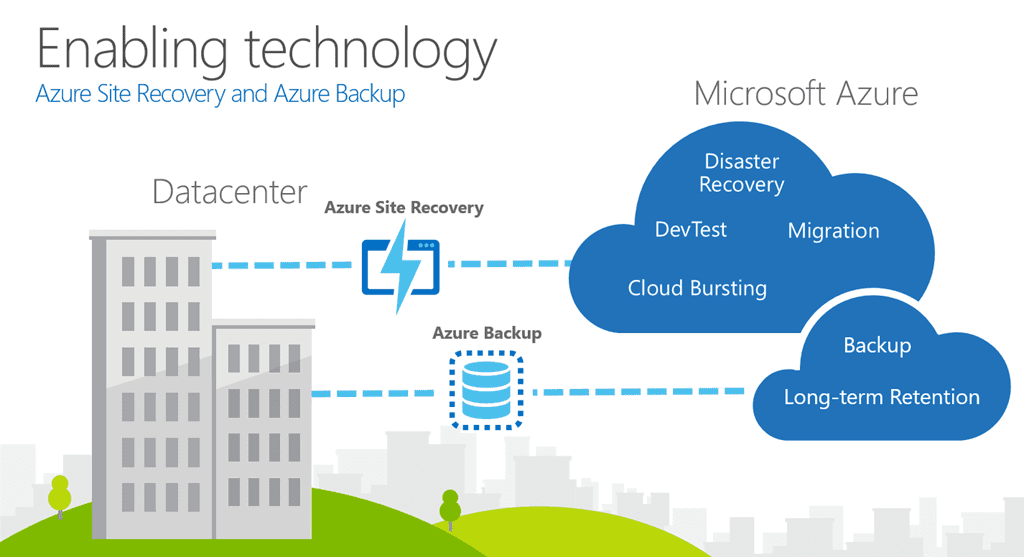Blog
Azure Site and Disaster Recovery for on-premises: A Guide to Use

By Elias Georgiou – System Consultant
Introduction
Disaster Recovery is a preventive planning process that ensures business continuity in the case of unfortunate events of system failure that might be caused by unpredicted events. These events could be hardware failures of servers or routers, cyber-attacks or natural disasters (earthquakes, floods or fire). Disaster Recovery involves policies, processes and procedures that must take place in such event and subsequently prepare the effective recovery for vital IT infrastructure of the organization. These mechanisms can be implemented either on premise or at remote locations. Disaster Recovery nowadays places a key part in company computing budgets, which often take up to 20-25% of IT expenses.
An effective Site Recovery solution for the on-premises infrastructure involves Microsoft Azure platform, which in general is an online recovery mechanism. This means that in case of a system failure all services will be switched over to Azure resources that will replace the on-premises infrastructure until the system has recovered. Azure Site Recovery is a market leading automated Disaster Recovery as a Service (DRaaS) solution. Let’s see below six key points of Azure Site Recovery:
- Automated recovery and data protection
Azure Site Recovery provides flexibility and automation when it comes to the recovery mechanisms and data protection for the on-premises infrastructure. Azure serves as a cloud recovery site that will handle data replication of on-premises servers and workstations as a first point of recovery mechanism and in case of a system failure , a complete system recovery.
- Backup of on-premises servers, workstations and workloads
Azure can act as a cloud backup datacentre as well. Rather than having an alternate on-premises or remote location disaster recovery site, using Azure will eventually reduce the IT related expenses by replicating all on-premises data to cloud. Azure also offers a flexible, multi-platform solution covering on-premises Windows, Linux, even virtual machines such as Hyper-V and VMWare.

- Improved data protection and security
Azure Site Recovery ensures seamlessly that your data are being backed up and kept securely on highly available and redundant Azure servers. To ensure the maximum level of integrity and security, Azure replicates on-premises applications in addition to the application data that are kept in Azure Backup. In the event of a system failure Azure Site Recovery will create Azure VMs to build your applications on, while populating them with their respective data that are retrieved from Azure Backup.
- Highly Customisable Features
Azure Site Recovery provides the flexibility to meet all the requirements of your recovery plan offering high level or customisable mechanisms. Azure Site Recovery has all the right resources to aid every IT engineers into fulfilling their goal whether there is a need of automation by using Azure Automation Runbooks and Windows PowerShell Scripts, manual intervention or custom mappings between on-premises data centre and Azure Disaster Recovery site.
Conclusion
Nevertheless, Azure can also offer a testing or analytics environment without causing any disruptions to the primary on-premises infrastructure due to the highly sophisticated and seamless integration. So, in general Azure provides many more features apart from just recovery mechanisms. Hence Azure is considered as one of the best disaster recovery solutions in the market.
